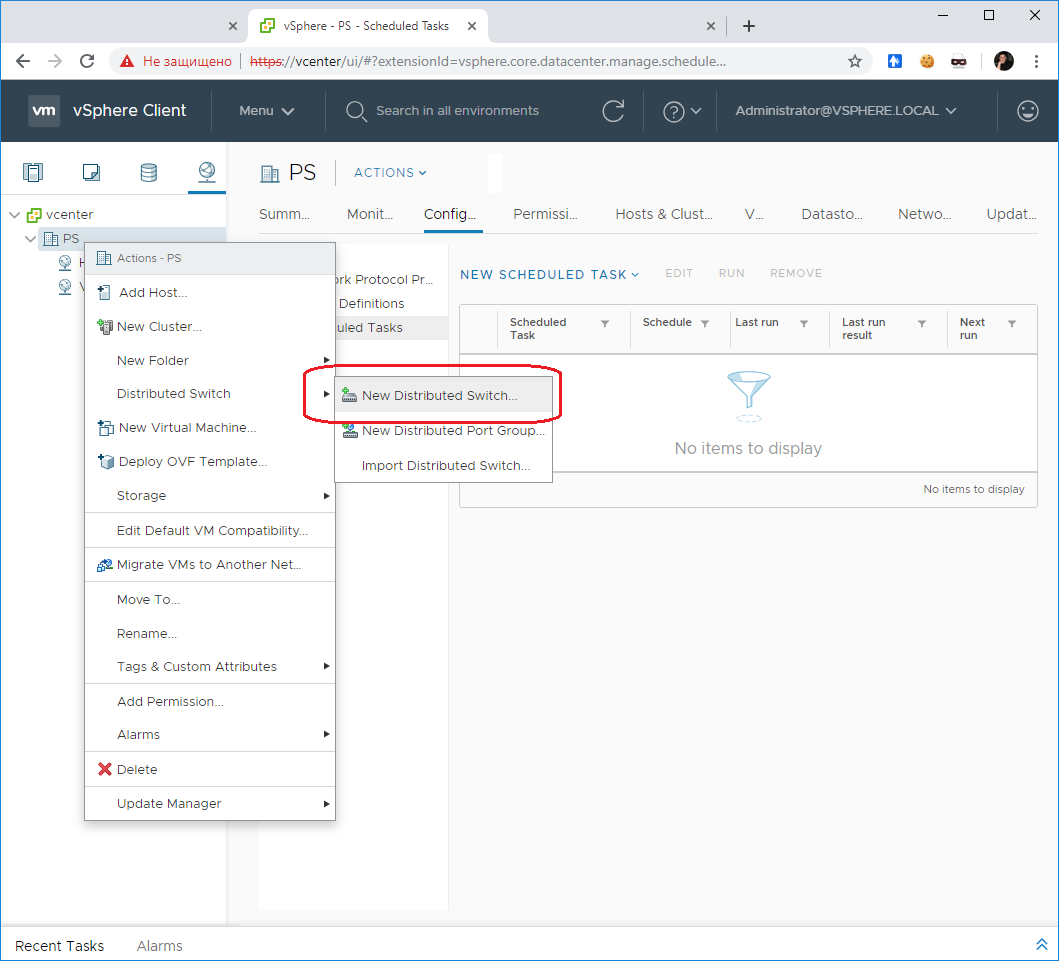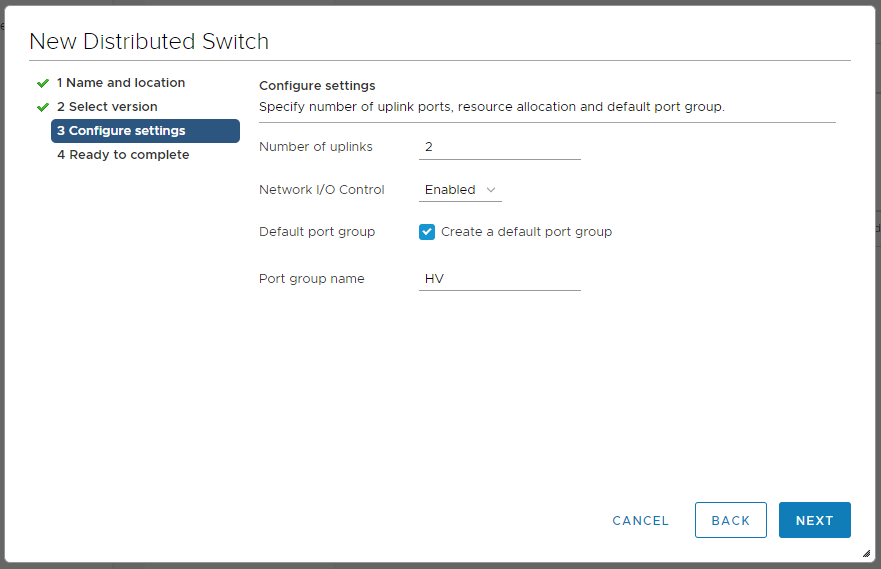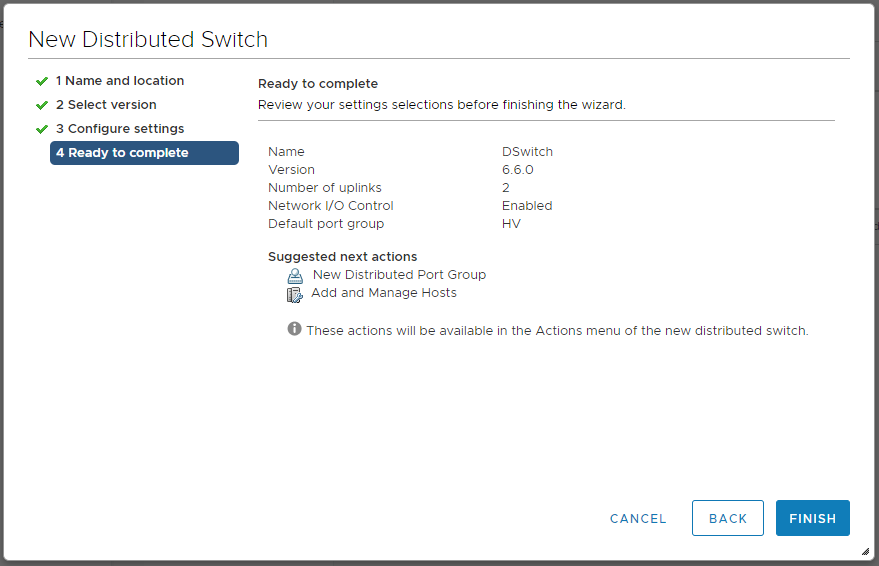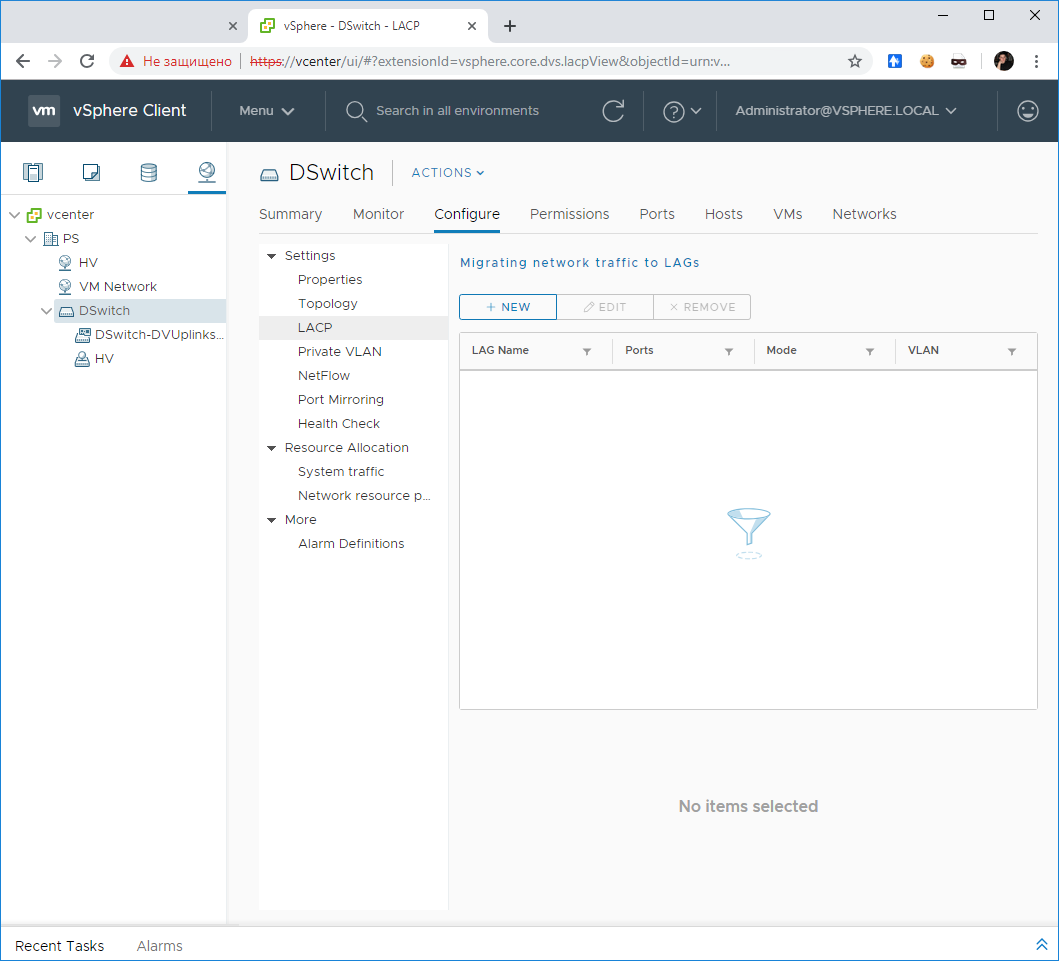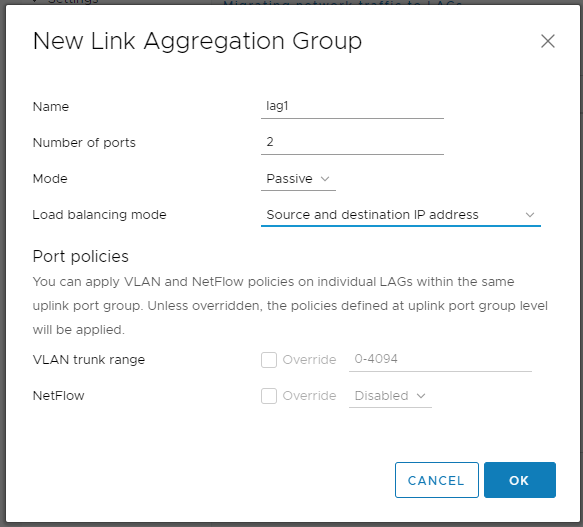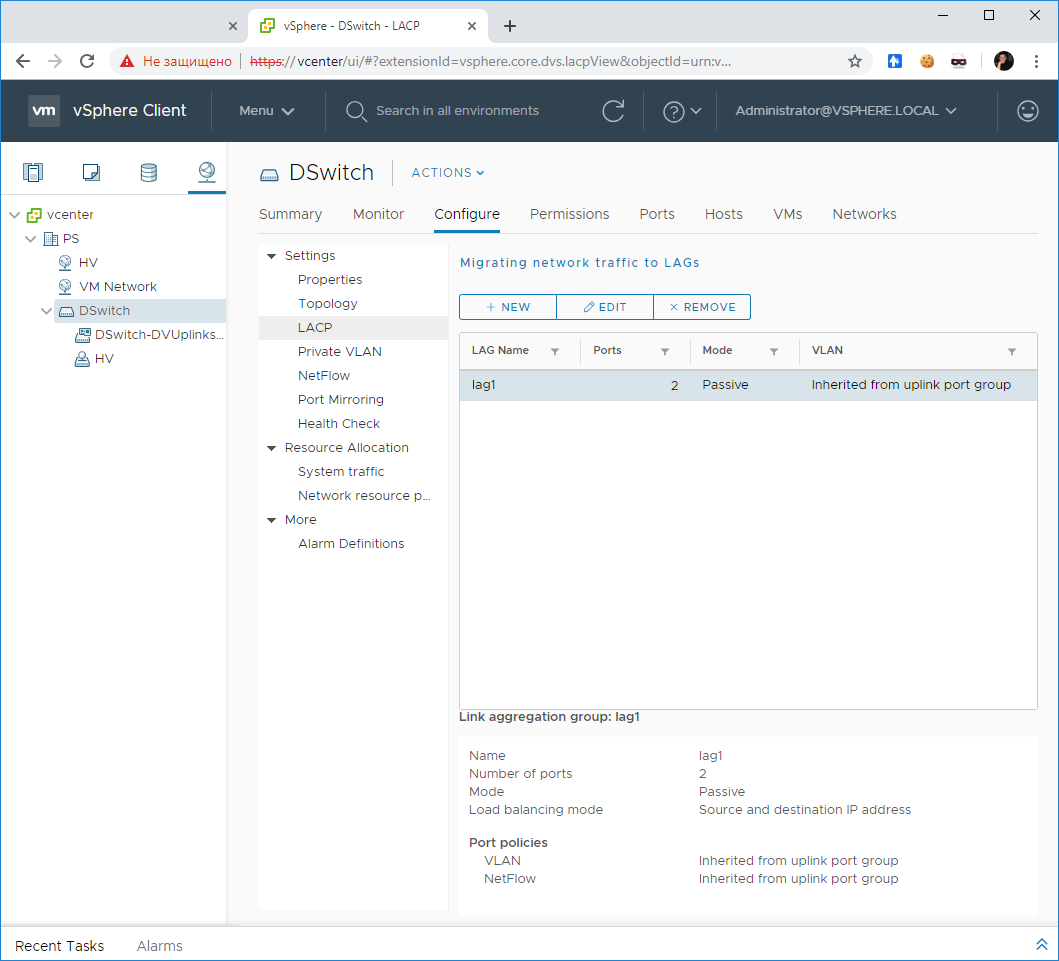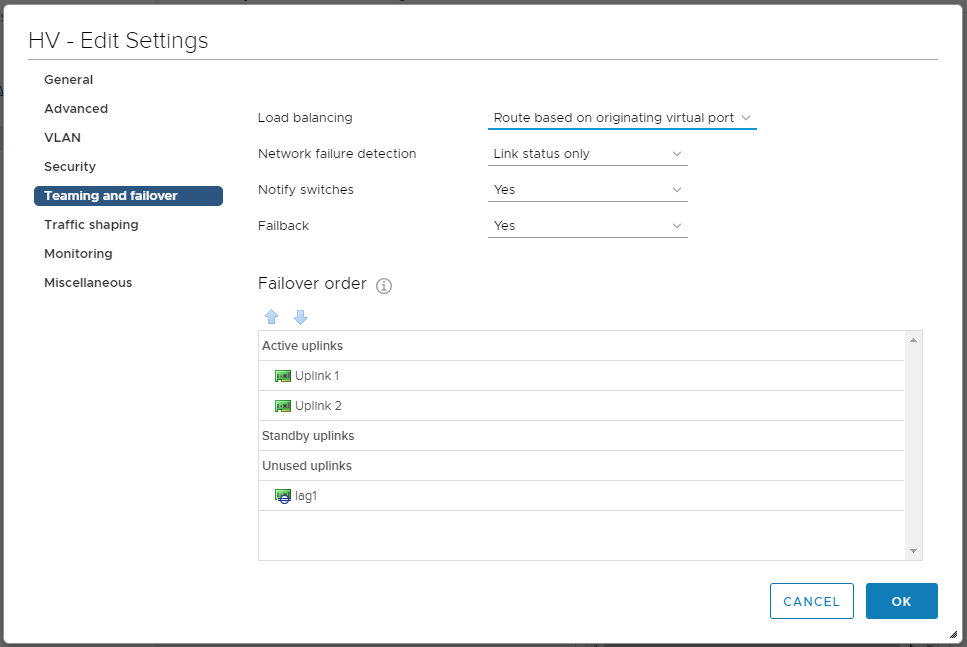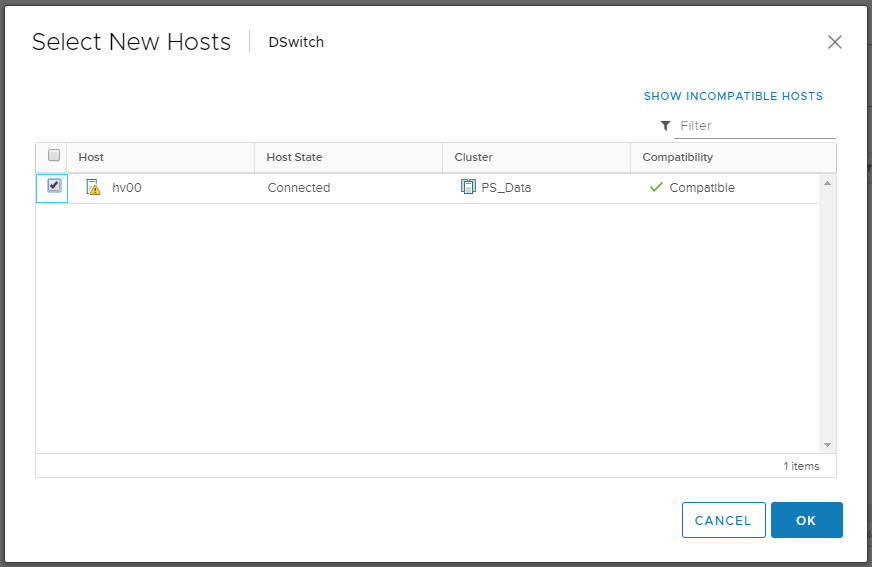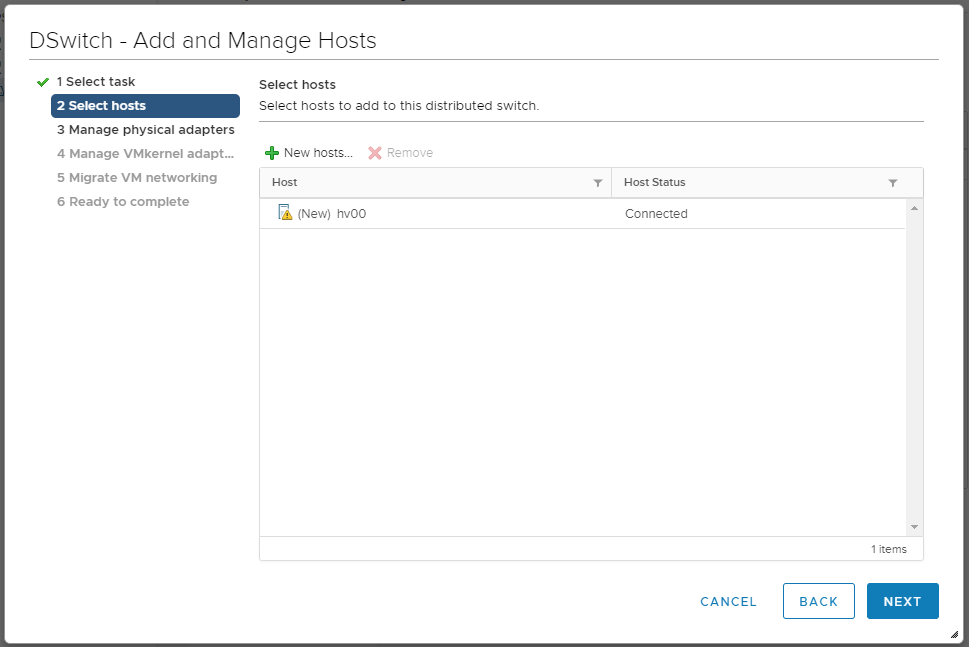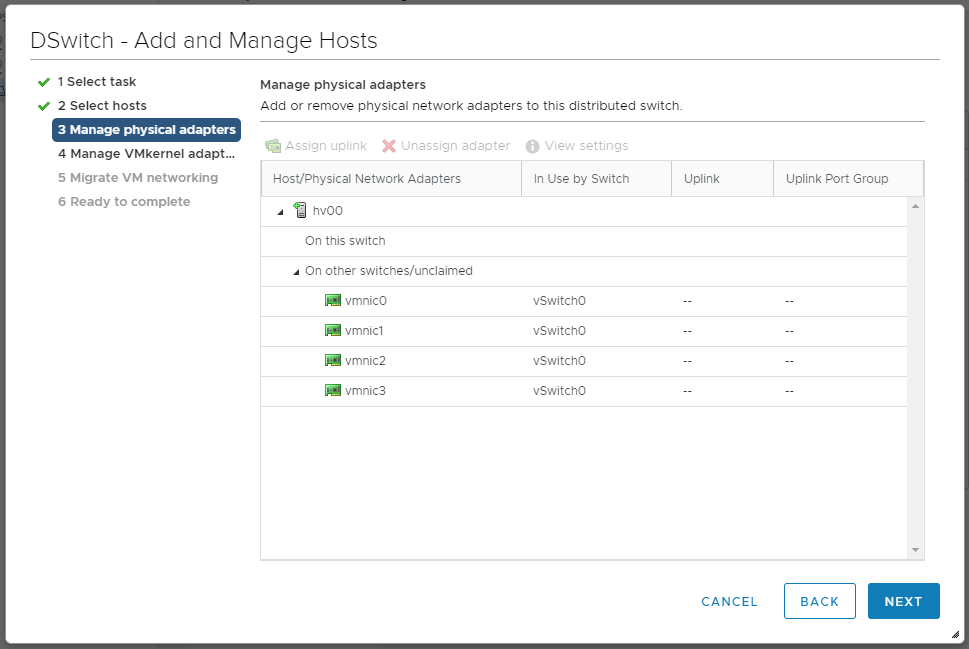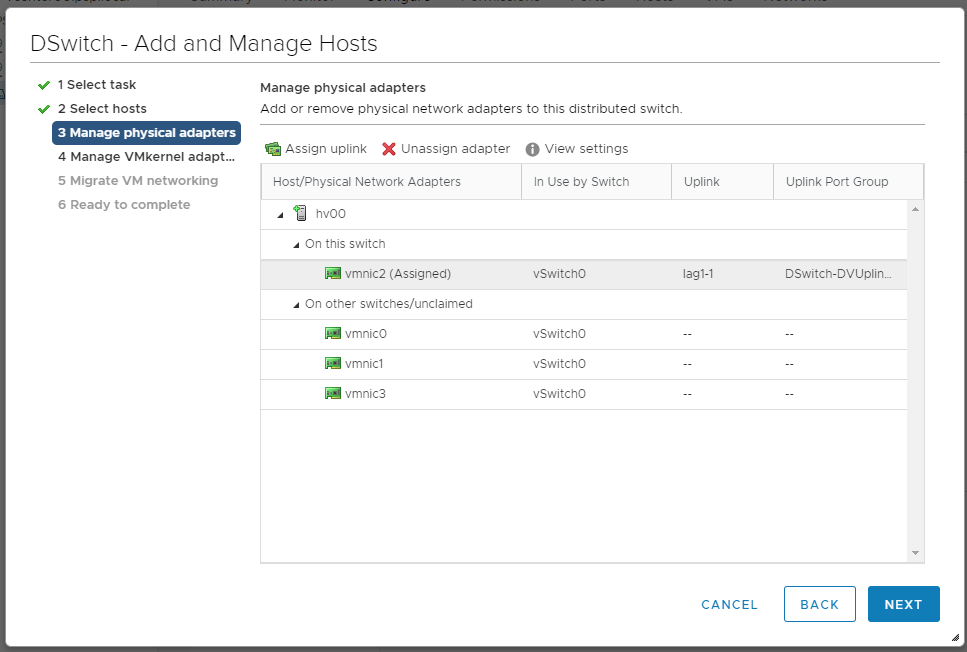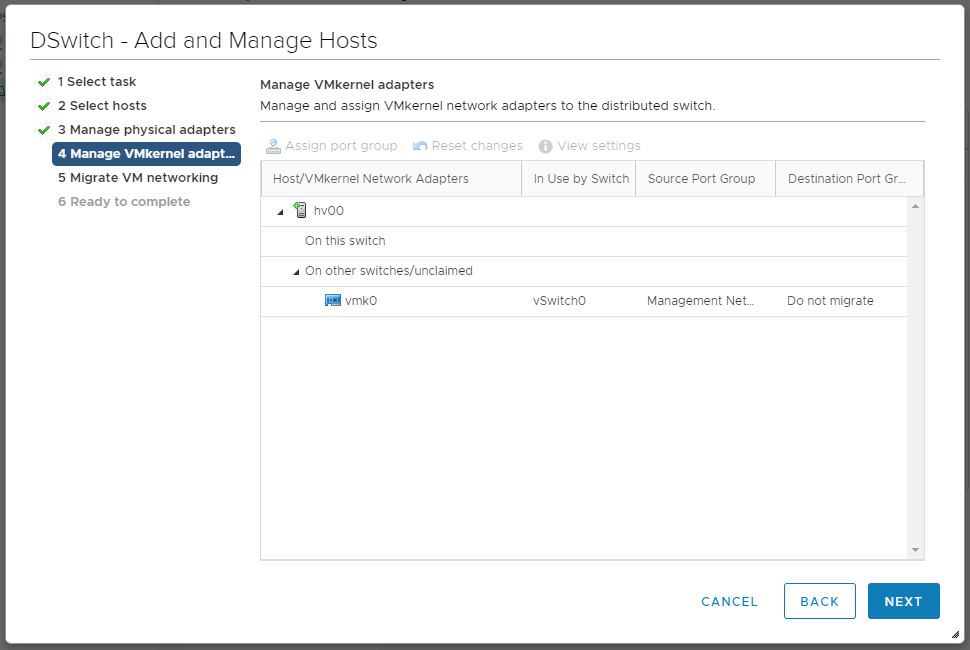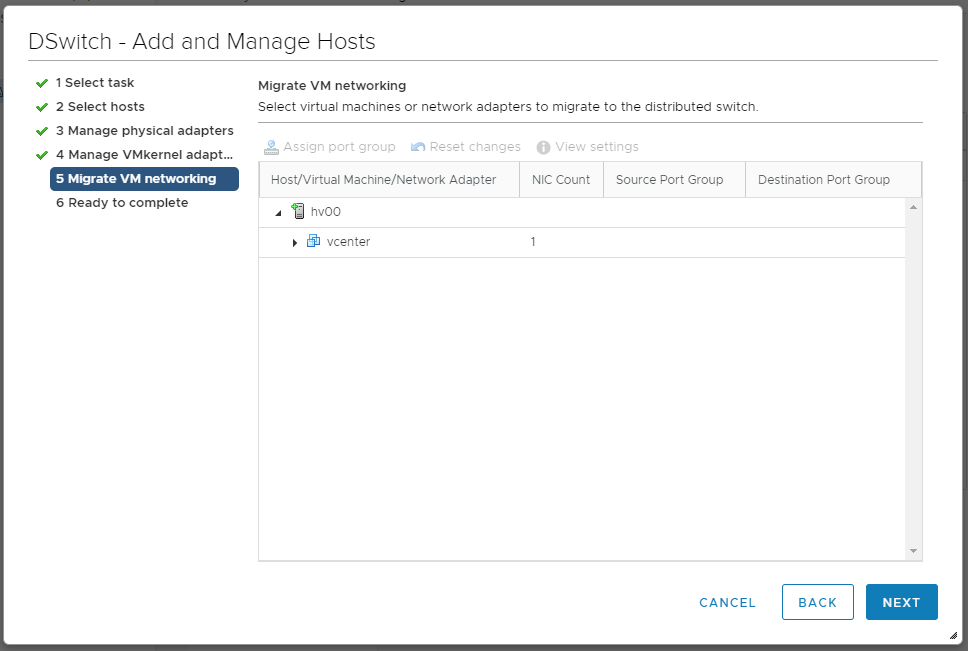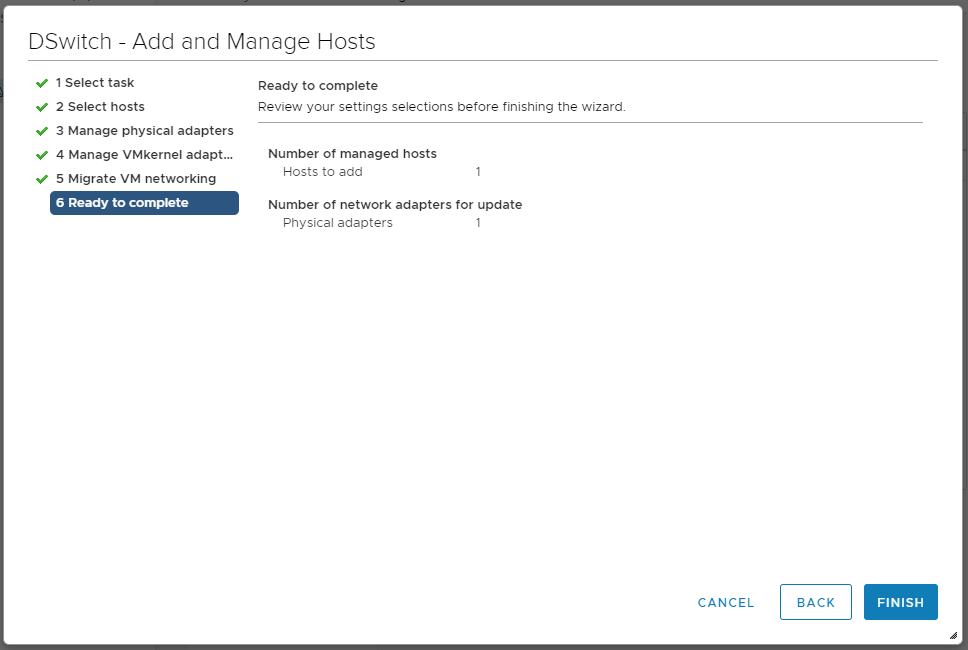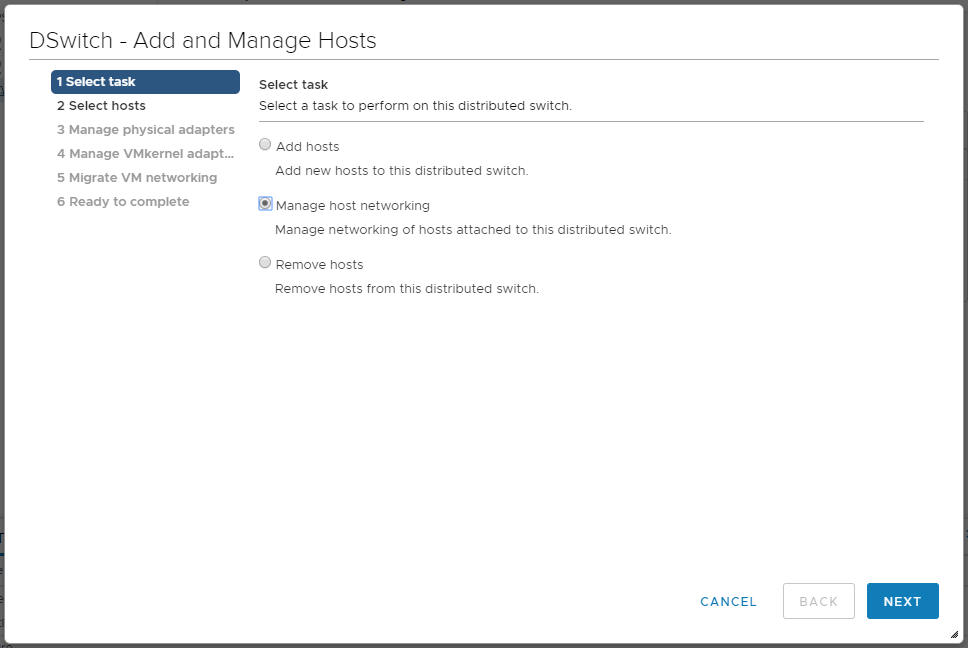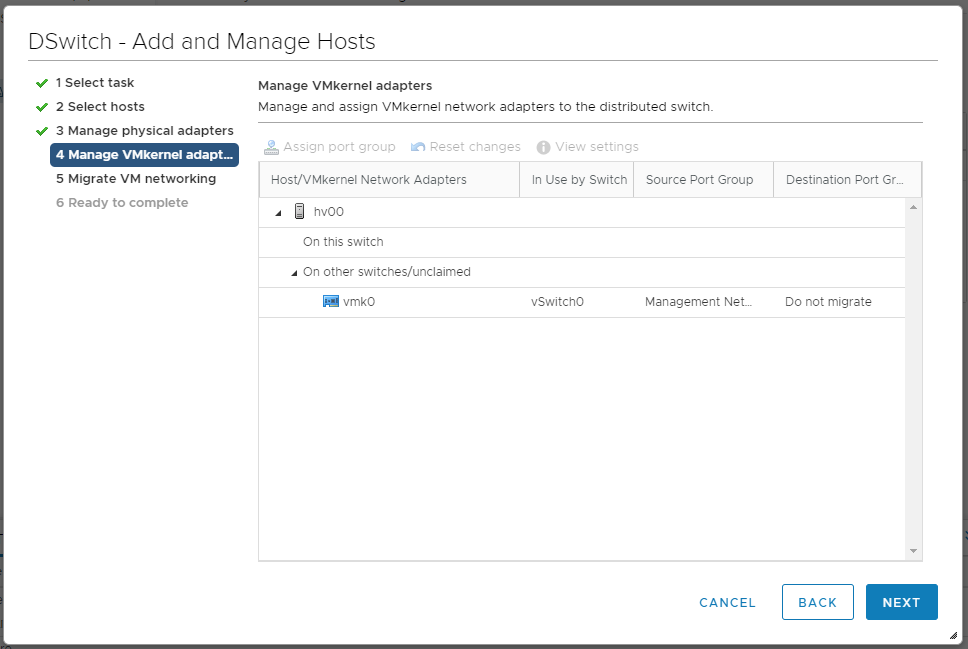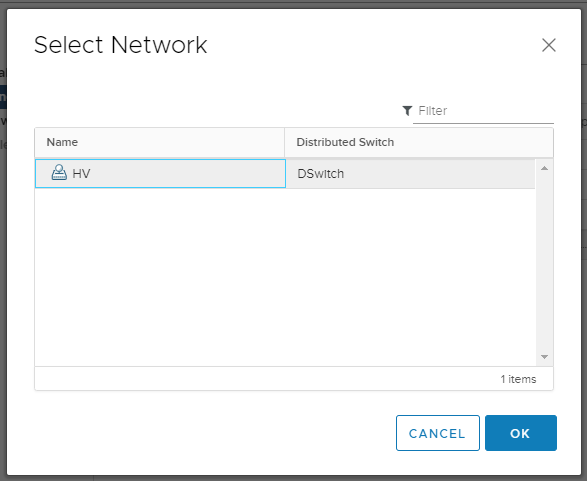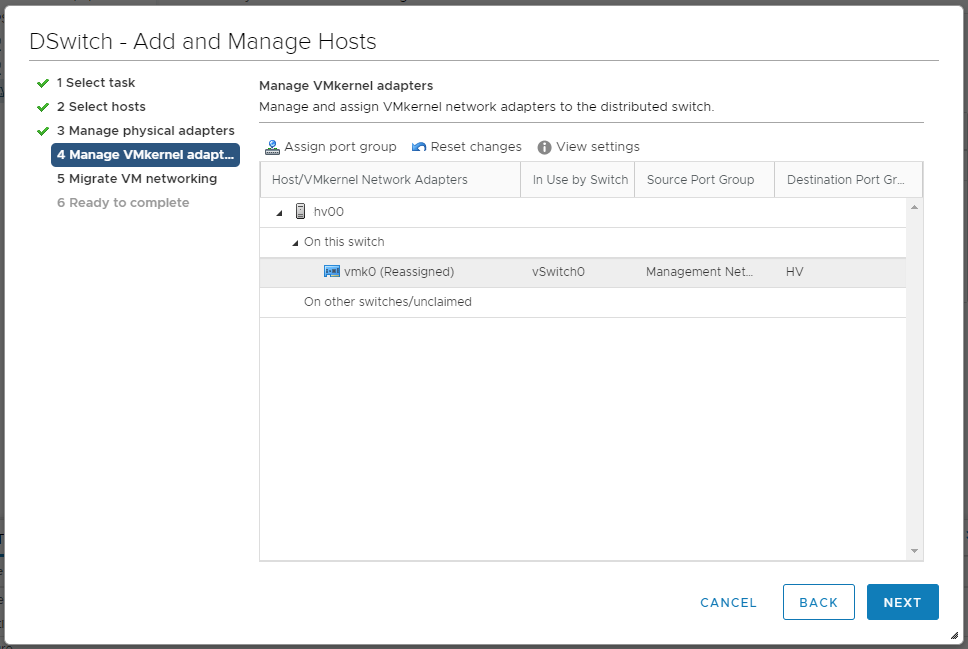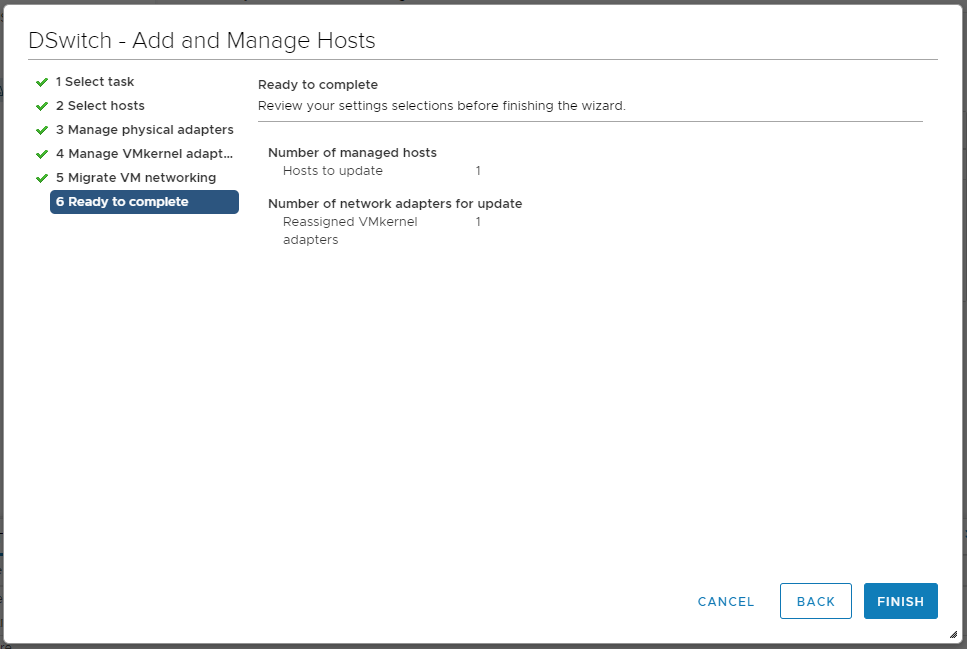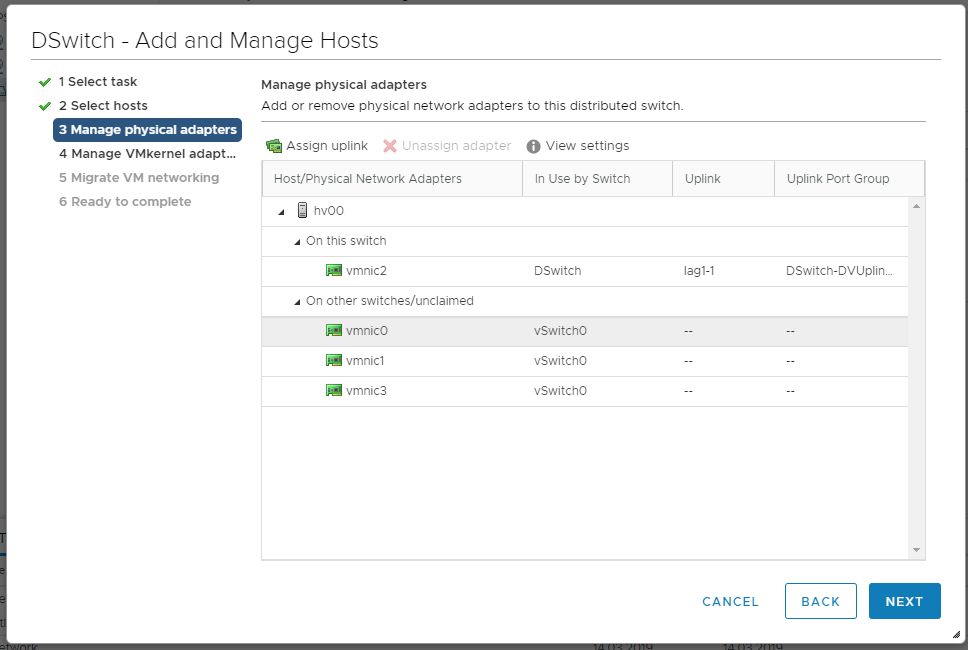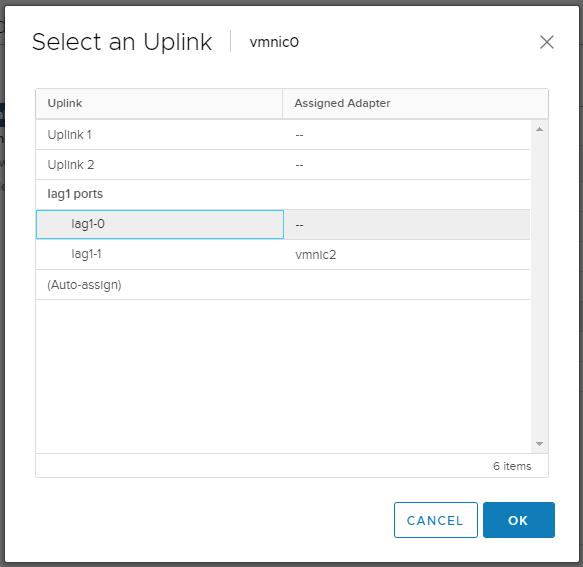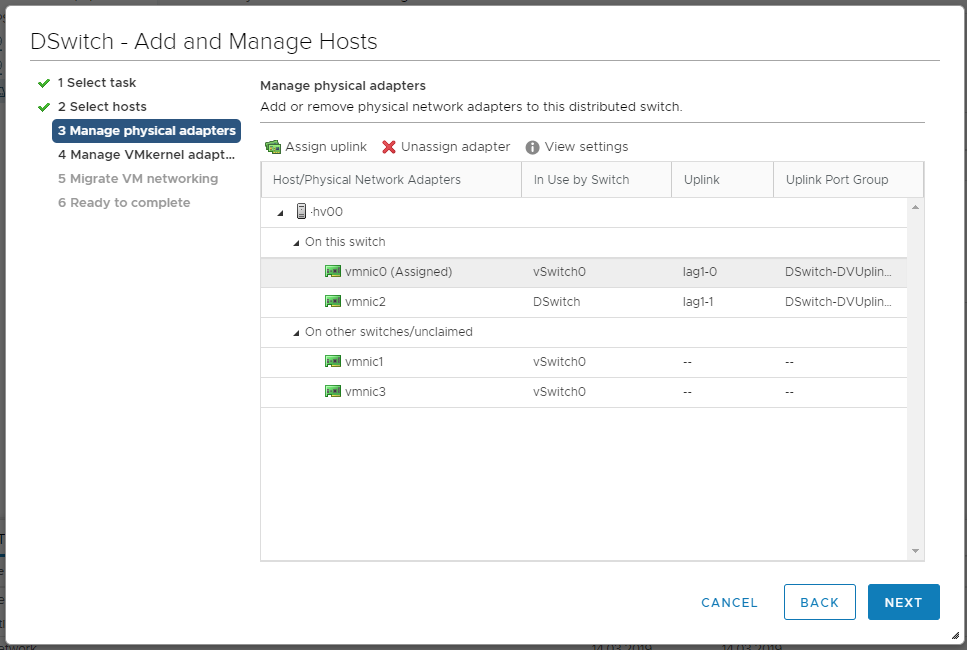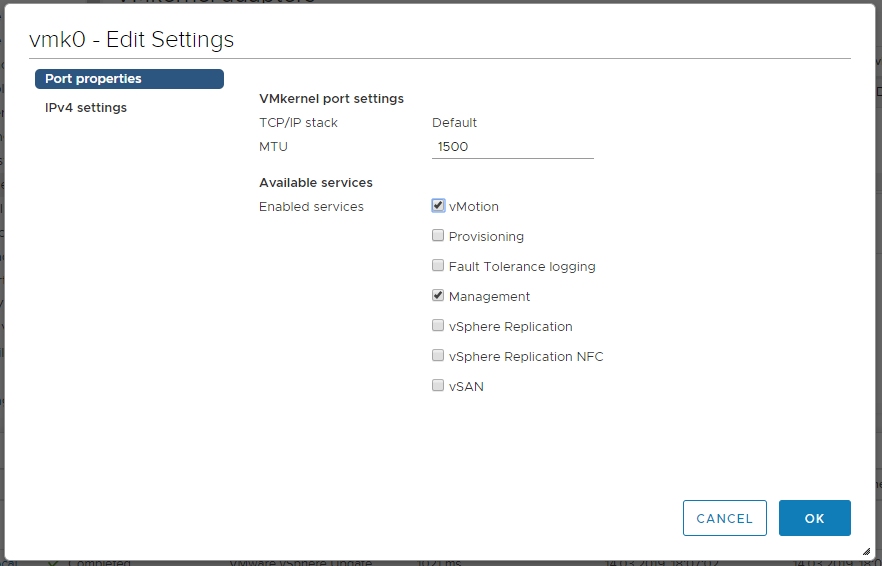Vmware distributed switch что это
основа понятия «распределенный виртуальный коммутатор vmware»
Delphi site: daily Delphi-news, documentation, articles, review, interview, computer humor.
Идея их заключается в следующем: в случае использования стандартных вКоммутаторов у вас разные (пусть очень часто и идентично настроенные) виртуальные коммутаторы на каждом сервере. Акцент я хочу сделать вот на чем: создать и поддерживать эту, пусть даже идентичную, конфигурацию придется вам. При необходимости, например, создать еще одну группу портов для еще одного VLAN вам потребуется повторить это простое действие на всех серверах ESX(i).
А в случае создания распределенного коммутатора вы получаете один-един-ственный (логически) коммутатор, существующий сразу на всех серверах ESX(i).
Вы настраиваете только этот, логически единый коммутатор. Новую группу портов из примера выше вы создадите один раз, и она появится для всех серверов ESX(i), входящих в распределенный коммутатор.
ВМ, даже при миграции с сервера на сервер, остаются не только на том же коммутаторе, но и даже на том же порту распределенного виртуального коммутатора (это называют Network vMotion). Это позволяет проще настраивать политики безопасности, осуществлять мониторинг трафика ВМ, привязываясь даже к отдельному порту вКоммутатора.
В отличие от стандартных виртуальных коммутаторов VMware, distributed vSwitch поддерживают Private VLAN и двухсторонний traffic shaping (о том, что это такое, см. в разделах 2.4.2 и 2.4.4). В версии 4.1 в список уникальных возможностей распределенных коммутаторов добавились такие функции, как:
Рис. 2.11. Иллюстрация сути распределенного виртуального коммутатора Источник: VMware
Кстати, подключение самого vCenter к распределенному коммутатору не поддерживается VMware.
Подключитесь клиентом vSphere к vCenter. Предполагается, что в иерархии vCenter уже создан объект Datacenter, уже добавлены серверы. Распределенный виртуальный коммутатор создается для объекта Datacenter, и существовать для серверов из разных Datacenter один dvSwitch не может.
Пройдите Home ^ Networking. В контекстном меню объекта Datacenter выберите пункт New vNetwork Distributed Switch.
В запустившемся мастере нас спросят:
— на последнем шаге можно будет снять флажок Automatically create a default port group. Если он стоит, то автоматически будет создана группа портов со 128 портами и именем по умолчанию. Имя по умолчанию малоинформативно, поэтому я рекомендую этот флажок снимать и создавать группу портов самостоятельно, после создания вКоммутатора.
Обратите внимание. У стандартных вКоммутаторов число портов настраивается для них самих, группы портов «безразмерные». У распределенных вКоммутаторов наоборот. Вы можете создать до 248 распределенных виртуальных коммутаторов для сервера. На одном сервере может быть до 4096 портов стандартных и распределенных вКоммутаторов. Это означает, что если не задавать заведомо огромных значений числа портов, то с ограничениями с этой стороны вы не столкнетесь.
Когда вы создали dvSwitch, то на странице Home ^ Inventory ^ Networking вы видите картинку примерно как на рис. 2.12.
Рис. 2.12. Свежесозданный dvSwitch
Обратите внимание. При использовании стандартных виртуальных коммутаторов невозможно поместить в одну группу портов виртуальные машины и интерфейс VMkernel или Service Console. На распределенных виртуальных коммутаторах VMware это возможно, на dvSwitch в одной группе портов могут сосуществовать и ВМ, и интерфейсы SC и VMkernel в любых сочетаниях.
vCenter 6.7 — создаём Distributed Switch
Сегодня создадим Distributed Switch на vCenter 6.7.
Распределённый коммутатор имеет несколько больший функционал в отличие от обычного. Ключевые моменты:
Ссылки
Создаём Distributed Switch
Будем считать, что вы уже знаете зачем собираетесь устанавливать Distributed Switch. Ставим.
Заходим в vCenter, переходим в раздел Networking. Нажимаем правой кнопкой на выбранный кластер,выбираем Distributed Switch > New Distributed Switch.
Открывается мастер создания распределённого коммутатора. Мы на вкладке Name and location.
Указываем название, NEXT. Мы на вкладке Select version.
Выбираем версию коммутатора. Коммутатор 6.0 не поддерживает хосты версии 6.5. Так что я выбираю последнюю версию. NEXT. Мы на вкладке Configure settings.
Выбираем количество аплинков. Можно включить Network I/O Control. Можно выбрать галку для создания дефолтной port group и указать её название. Я буду использовать эту группу для управления гипервизорами и vCenter, называю HV. NEXT. Мы на вкладке Ready to complete.
Настройка LACP
Выбираем Distributed Switch в UI. Открываем Configure > Settings > LACP.
Нажимаем кнопку +NEW. Открывается мастер создания группы LAG.
В поле Number of ports указываем количество линков. В моей практики встречалось 4 гигабитных линка, 2 десятигигабитных. Всё зависит от вашей конфигурации.
Настройка Default Port Group
Переключаемся на раздел VLAN. Эту группу портов мы будем использовать для управления хостами, поэтому настраиваем такой же VLAN, в котором живут ESXi и vCenter.
Переключаемся на раздел Teaming and failover.
По умолчанию у Port Group LACP не используется, включим. Перетаскиваем lag1 вверх, а аплинки вниз.
OK. Сохраняем. Каждый раз потом при создании новой группы портов нужно настраивать LACP для этой группы. Можно это делать прямо в процессе создания.
Добавление хоста в Distributed Switch
Открывается мастер. Мы попадаем в раздел Select task.
Выбираем Add hosts. NEXT. Мы попадаем в раздел Select hosts.
Выделяем хост галкой, OK.
NEXT. Мы попадаем в раздел Manage physical adapters.
vmnic1 цепляем кнопкой Assign upling к lag1-1.
Пока ничего не меняем, пусть vmk0 будет на старом локальном коммутаторе. NEXT. Мы попадаем в раздел Migrate VM networking.
NEXT. Мы попадаем в раздел Ready to complete.
FINISH. Ждём когда хост добавится.
Открывается мастер. Мы попадаем в раздел Select task.
Теперь выбираем пункт Manage host networking. NEXT. Доходим до раздела Manage VMkernel adapter.
Выбираем vmk0, нажимаем Assign port group.
Выбираем наш Port Group с названием HV, который находится в управляющем VLAN. OK.
NEXT. Мы попадаем в раздел Migrate VM networking.
NEXT. Мы попадаем в раздел Ready to complete.
FINISH. Управление хостом должно перейти на Distributed Switch.
Снова редактируем сеть хоста.
vmnik0 привязываем к lag1-0.
NEXT. NEXT. NEXT. FINISH.
Резюме
Итак, мы создали Distributed Switch, перенесли в него хосты, настроили LACP, разрешили vMotion.
vSphere Distributed Switch
Configure, monitor, and administer virtual machine access switches for the entire data center with the centralized interface delivered by vSphere Distributed Switch.
Overview
What is vSphere Distributed Switch and how it helps in Virtual Machine Networking?
VMware vSphere Distributed Switch (VDS) provides a centralized interface from which you can configure, monitor and administer virtual machine access switching for the entire data center. The VDS provides:
Features
Simplified Virtual Machine Network Configuration
Use the following VDS features to streamline provisioning, administration and monitoring of virtual networking across multiple hosts:
Enhanced Network Monitoring and Troubleshooting Capabilities
The VDS provides the following monitoring and troubleshooting capabilities:
Support for Advanced vSphere Networking Features
The VDS supplies the building blocks for many networking capabilities in the vSphere environment, including the following:
How it Works
Technical Details
The VDS extends the features and capabilities of virtual networks while simplifying provisioning and the ongoing configuration, monitoring and management process.
vSphere network switches can be divided into two logical sections: the data plane and the management plane. The data plane implements the packet switching, filtering, tagging and so on. The management plane is the control structure used by the operator to configure data plane functionality. Each vSphere Standard Switch (VSS) contains both data and management planes, and the administrator configures and maintains each switch individually.
The VDS eases this management burden by treating the network as an aggregated resource. Individual host-level virtual switches are abstracted into one large VDS spanning multiple hosts at the data-center level. In this design, the data plane remains local to each VDS but the management plane is centralized.
Each VMware vCenter Server instance can support up to 128 VDSs; each VDS can manage up to 500 hosts.
Additional Details
Distributed Virtual Port Groups (DV Port Groups) — Allows you to specify port configuration options for each member port.
Distributed Virtual Uplinks (dvUplinks) — Provides a level of abstraction for the physical network adaptors (vmnics) on each host.
Private VLAN (PVLAN) Support — Enables broader compatibility with existing networking environments using the technology.
Network vMotion — Simplifies monitoring and troubleshooting by tracking the networking state (such as counters and port statistics) of each virtual machine as it moves from host to host on a VDS.
Bi-directional Traffic Shaping — Applies traffic shaping policies on DV port group definitions, defined by average bandwidth, peak bandwidth and burst size.
vSphere Distributed Switch
Configure, monitor, and administer virtual machine access switches for the entire data center with the centralized interface delivered by vSphere Distributed Switch.
Overview
What is vSphere Distributed Switch and how it helps in Virtual Machine Networking?
VMware vSphere Distributed Switch (VDS) provides a centralized interface from which you can configure, monitor and administer virtual machine access switching for the entire data center. The VDS provides:
Features
Simplified Virtual Machine Network Configuration
Use the following VDS features to streamline provisioning, administration and monitoring of virtual networking across multiple hosts:
Enhanced Network Monitoring and Troubleshooting Capabilities
The VDS provides the following monitoring and troubleshooting capabilities:
Support for Advanced vSphere Networking Features
The VDS supplies the building blocks for many networking capabilities in the vSphere environment, including the following:
How it Works
Technical Details
The VDS extends the features and capabilities of virtual networks while simplifying provisioning and the ongoing configuration, monitoring and management process.
vSphere network switches can be divided into two logical sections: the data plane and the management plane. The data plane implements the packet switching, filtering, tagging and so on. The management plane is the control structure used by the operator to configure data plane functionality. Each vSphere Standard Switch (VSS) contains both data and management planes, and the administrator configures and maintains each switch individually.
The VDS eases this management burden by treating the network as an aggregated resource. Individual host-level virtual switches are abstracted into one large VDS spanning multiple hosts at the data-center level. In this design, the data plane remains local to each VDS but the management plane is centralized.
Each VMware vCenter Server instance can support up to 128 VDSs; each VDS can manage up to 500 hosts.
Additional Details
Distributed Virtual Port Groups (DV Port Groups) — Allows you to specify port configuration options for each member port.
Distributed Virtual Uplinks (dvUplinks) — Provides a level of abstraction for the physical network adaptors (vmnics) on each host.
Private VLAN (PVLAN) Support — Enables broader compatibility with existing networking environments using the technology.
Network vMotion — Simplifies monitoring and troubleshooting by tracking the networking state (such as counters and port statistics) of each virtual machine as it moves from host to host on a VDS.
Bi-directional Traffic Shaping — Applies traffic shaping policies on DV port group definitions, defined by average bandwidth, peak bandwidth and burst size.
vSphere Distributed Switch
Configure, monitor, and administer virtual machine access switches for the entire data center with the centralized interface delivered by vSphere Distributed Switch.
Overview
What is vSphere Distributed Switch and how it helps in Virtual Machine Networking?
VMware vSphere Distributed Switch (VDS) provides a centralized interface from which you can configure, monitor and administer virtual machine access switching for the entire data center. The VDS provides:
Features
Simplified Virtual Machine Network Configuration
Use the following VDS features to streamline provisioning, administration and monitoring of virtual networking across multiple hosts:
Enhanced Network Monitoring and Troubleshooting Capabilities
The VDS provides the following monitoring and troubleshooting capabilities:
Support for Advanced vSphere Networking Features
The VDS supplies the building blocks for many networking capabilities in the vSphere environment, including the following:
How it Works
Technical Details
The VDS extends the features and capabilities of virtual networks while simplifying provisioning and the ongoing configuration, monitoring and management process.
vSphere network switches can be divided into two logical sections: the data plane and the management plane. The data plane implements the packet switching, filtering, tagging and so on. The management plane is the control structure used by the operator to configure data plane functionality. Each vSphere Standard Switch (VSS) contains both data and management planes, and the administrator configures and maintains each switch individually.
The VDS eases this management burden by treating the network as an aggregated resource. Individual host-level virtual switches are abstracted into one large VDS spanning multiple hosts at the data-center level. In this design, the data plane remains local to each VDS but the management plane is centralized.
Each VMware vCenter Server instance can support up to 128 VDSs; each VDS can manage up to 500 hosts.
Additional Details
Distributed Virtual Port Groups (DV Port Groups) — Allows you to specify port configuration options for each member port.
Distributed Virtual Uplinks (dvUplinks) — Provides a level of abstraction for the physical network adaptors (vmnics) on each host.
Private VLAN (PVLAN) Support — Enables broader compatibility with existing networking environments using the technology.
Network vMotion — Simplifies monitoring and troubleshooting by tracking the networking state (such as counters and port statistics) of each virtual machine as it moves from host to host on a VDS.
Bi-directional Traffic Shaping — Applies traffic shaping policies on DV port group definitions, defined by average bandwidth, peak bandwidth and burst size.




